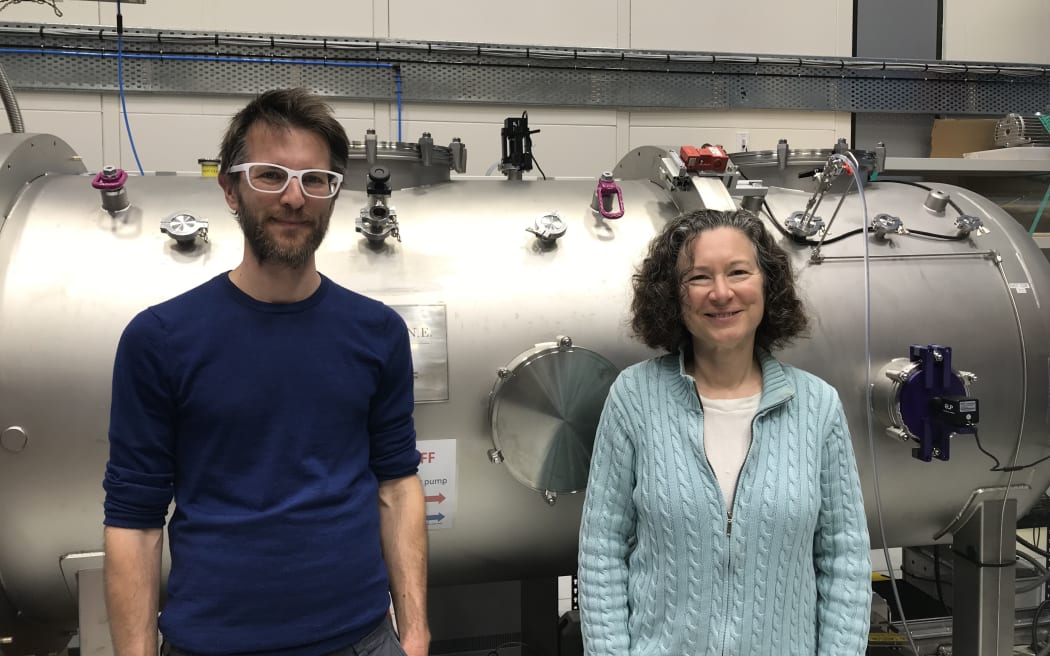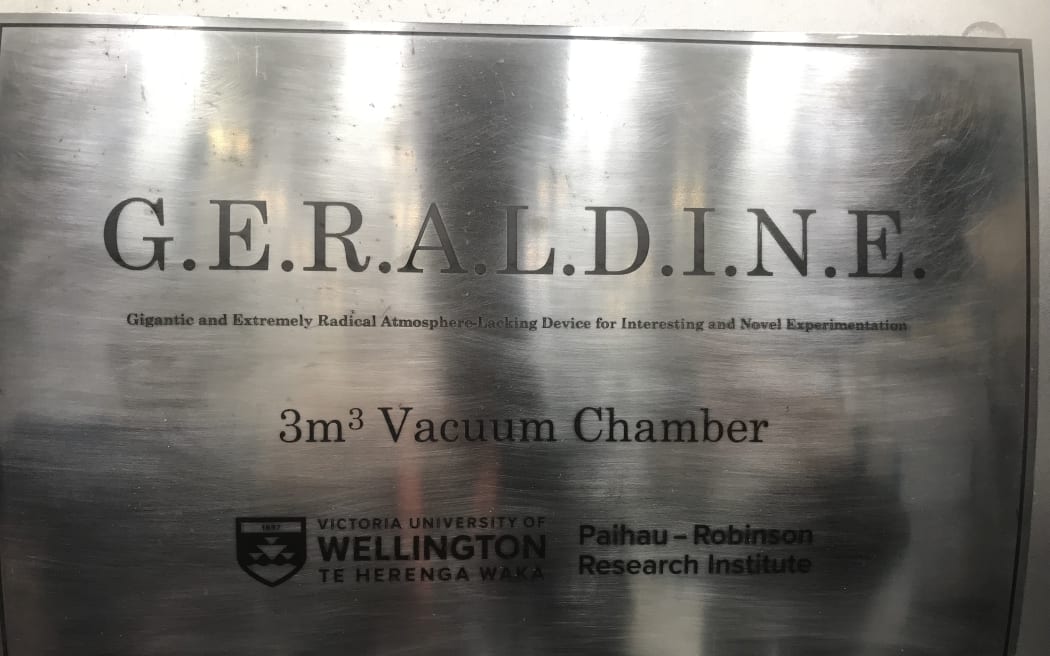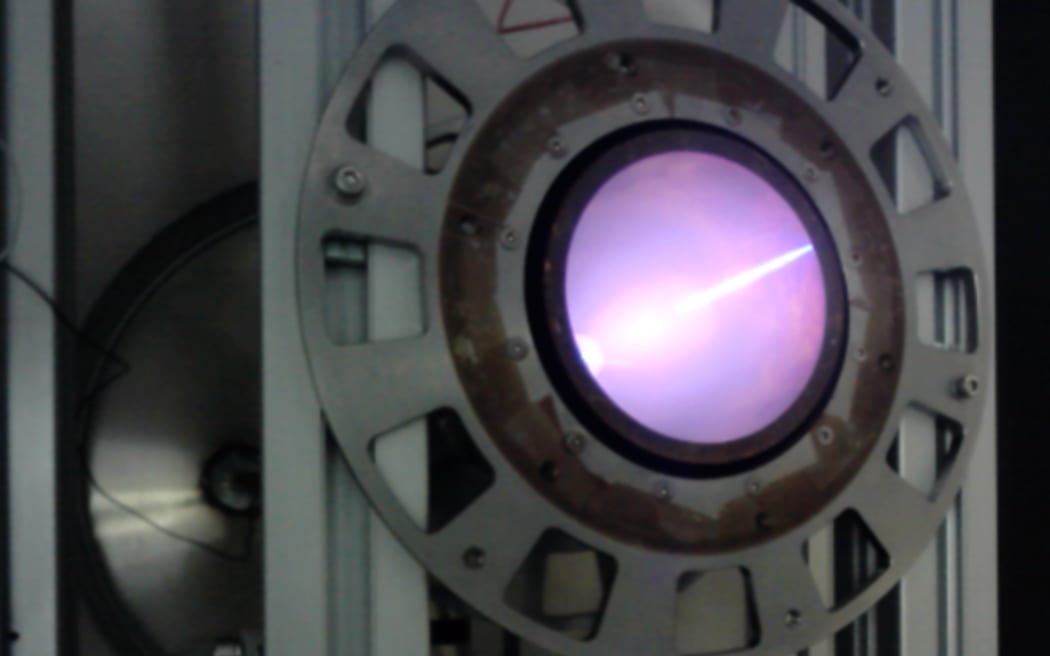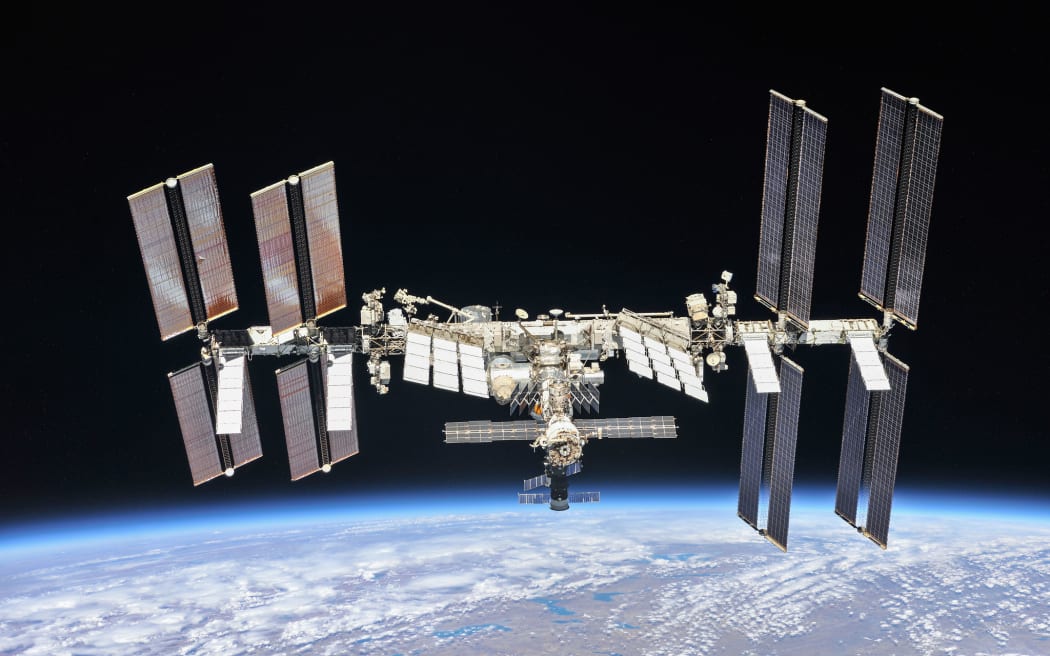GERALDINE loiters at one end of the giant lab space. Metal, shiny, round and very large, she’s been purposely built to help scientists and engineers test plasma rocket thrusters in the vacuum environment of space.

Dr Ben Mallett and Betina Pavri at Robinson Research Institute. Photo: Claire Concannon / RNZ
Follow Our Changing World on Apple Podcasts, Spotify, Stitcher, iHeartRADIO, Google Podcasts, RadioPublic or wherever you listen to your podcasts
New frontiers
As senior scientist Dr Ben Mallett explains, GERALDINE’s full name is the Gigantic and Extremely Radical Atmosphere-Lacking Device for Interesting and Novel Experimentation. And you can’t really get more novel than the current project he is working on. It’s the Paihau – Robinson Research Institute’s first foray into space, and they are looking to test a brand-new superconducting magnet and flux pump design to see if it can make the plasma rockets more efficient.

GERALDINE, the vacuum chamber for testing plasma rockets. Photo: Claire Concannon / RNZ
Plasma rockets
Actually, the full and correct name is ‘applied-field magneto plasma dynamic thrusters’. These kinds of rockets don’t produce a huge amount of force – for some, the thrust they produce is equal to the weight of a piece of paper on your hand. However, they are extremely efficient. In the frictionless vacuum of space, over time, they can help spacecrafts build up great speeds and travel long distances.
Plasma is charged gas, and in these kinds of electric space thruster, electromagnets are used to direct the plasma so that it fires out the back and pushes the rocket forward. But the weight and power requirements of current magnets used in these thrusters is a barrier.
Enter Paihau – Robinson, known for their work with high-temperature superconducting magnets. Superconducting materials conduct electrical current with no resistance, so they can create very powerful electro-magnets when a current is passed through them. They do come with baggage though – a cryocooler to keep the magnet at -200oC and a flux pump to send current through the magnet to power it up. All of these parts need to be carefully designed and then tested.

The radiant glow given off by the plasma of ionized argon gas in the thruster being built at Paihau – Robinson Research Institute. Photo: Jakub Glowacki
But space is tricky….
There’s a lot to think about when making equipment to be used in space. There’s the shaking of everything as it gets launched through the atmosphere and then there’s the lack of atmosphere once it’s up there – the vacuum, the radiation, the different temperature effects – all have to be considered.
That’s where the experience of senior principal engineer Betina Pavri comes in. Having worked at NASA’s Jet Propulsion Laboratory on several missions, Betina is well placed to help the team consider everything that needs to be tested before they can be confident that their technology will work in space.

The International Space Station. Photo: NASA Johnson CC BY-NC-ND 2.0
And that’s the ultimate test the team is working towards. In 2025 their superconducting magnet, and all the other bits it needs to work (cryocooler, flux pump, computer and electronics) will be taking a trip to the International Space Station. Placed on the outside of the Station, it will operate for 15 weeks as a test to see whether this technology is a viable option for use in space.
Listen to the episode to learn more about high-temperature superconducting magnets, plasma rockets, and the careful considerations of designing something for use in space.
To learn more:
-
Peter Griffin covered the New Zealand government’s first funded space mission: MethaneSAT, a satellite tuned in to detect global methane emissions.
-
Dr Taniela Lolohea uses plasma for very different applications.
-
To learn more about superconductors, Alison Ballance spoke to Ben in 2018 about superconductor sandwiches.


